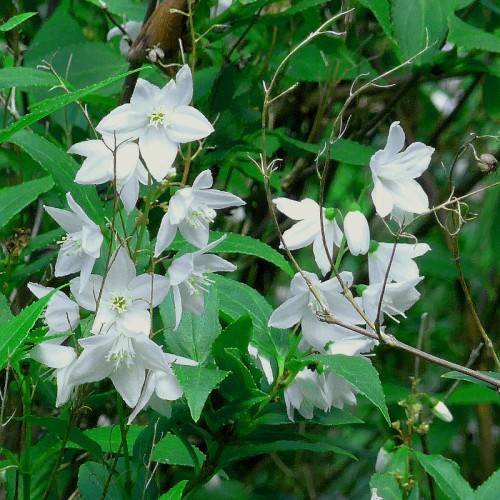
slender deutzia
Deutzia gracilis
Cycle:
Perennial
Watering:
Average
Hardiness Zone:
5 - 8
Flowers:
Flowers In Spring
Sun:
Full sun, Part sun/part shade
Soil:
Humus rich, Well-drained
Fruits:
Fruits In Summer Ready In Fall
Leaf:
Yes
Growth Rate:
Moderate
Maintenance:
Low
Drought Tolerant:
Yes
Care Level:
Medium
watering
Slender deutzia (Deutzia gracilis) should be watered deeply and infrequently, aiming for about 1 inch per week (more in extreme heat). The best way to accomplish this is to water until the soil is soaked, then allow it to dry to a depth of about 2 inches before watering again. To help retain moisture and protect the roots, it's best to add a thick layer of mulch around the base of the plant. To test when a plant needs watering, stick your finger approximately an inch into the soil. If it feels dry, it's time to water.
sunlight
Slender deutzia (Deutzia gracilis) is a deciduous shrub that thrives in sites that get full sun. It grows best in sites that have at least 6 hours of direct sunlight, mostly in the morning, in order to encourage maximum flowering. During the summer, slender deutzia should receive either full sun throughout the day or morning sun and afternoon shade. During the winter, it is best for the plant to get sunlight as soon as the sun rises in order to promote cold hardiness and help protect the plant's foliage. Additionally, to ensure maximum blooms and beautiful foliage,Slender deutzia requires moist yet well-drained soil and plenty of compost.
pruning
Slender deutzia (Deutzia gracilis) should be pruned each winter, right before growth begins in spring. Pruning should be light, removing thin, weak or crossed branches, as well as any spent flower buds left on the plant from the previous season. This pruning is best done in the dormant season (winter) to avoid additional stress on the plant that could lead to disease. When pruning, it is important to keep the natural shape of the plant in mind. Never prune more than a third of the plant in 1 year, and always use sharp, clean pruning shears in order to achieve a clean cut.
